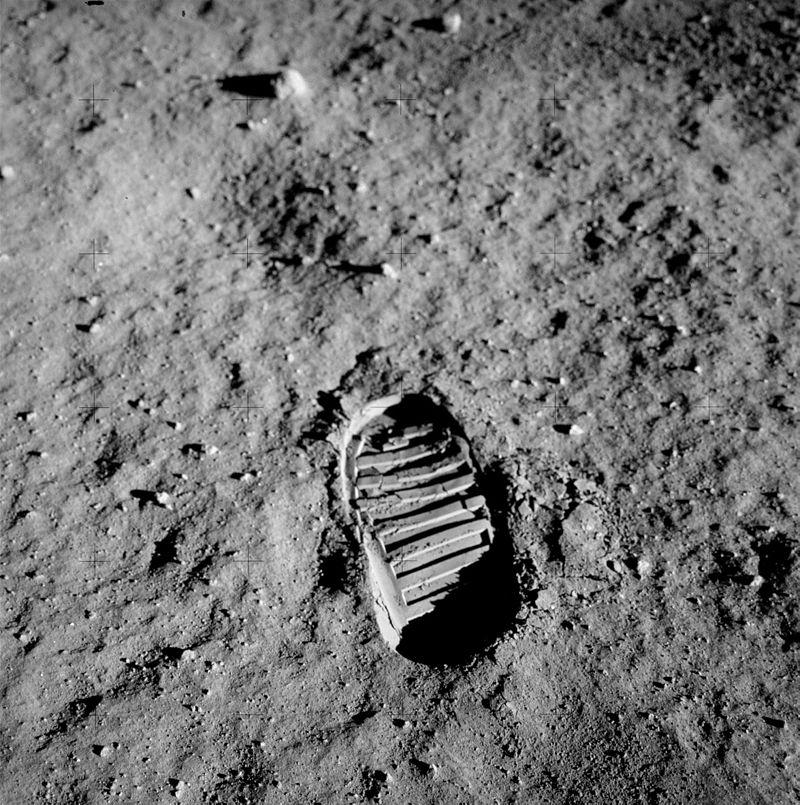Lunar Dust & Regolith
Photo taken of a footprint during the Apollo 11 mission. Credit: NASA / Buzz Aldrin – NASA; original upload; ALSJ (AS11-40-5877)
An understanding of the physical and chemical properties of lunar soil and regolith material is fundamental for future exploration missions to the Moon. Numerous members of CLRN are working to characterize the mineralogical and chemical properties of lunar dust and regolith using a variety of analytical techniques (eg. scanning electron microscopy (SEM), LAM ICP MS, etc.). In doing so, we hope to better understand the mechanisms by which lunar regolith is emplaced and its physical properties to better understand the lunar environment for future exploration missions. A major part of the CLRN’s work includes the development of an instrument suite for a landed dust characterization mission, building upon Canadian expertise in Lidar systems (e.g., NASA Phoenix mission) and astromaterials. This mission will complement the work done during orbital Lunar Atmosphere and Dust Environment Explorer (LADEE) mission.
As the Apollo missions only returned a small amount of lunar regolith, engineers and scientists who need access to large quantities of lunar soils for studies involving in-situ resource extraction, drilling, excavation, or construction must synthesize regolith simulants that mimic its properties. Understanding the effects of dust on equipment and its potential to impede human activity during an extended lunar mission and will be essential as new instrumentation and equipment are tested.
CLRN researchers are also working to address the dynamics of ejected lunar dust by examining the rate of impacts of all sizes between the Moon and Earth. The aim of these studies is to address the issue of ocean sediment He3 flux variations and if these could be due largely to lunar impacts alone. Furthermore, because the Moon is airless, lunar material is either easily ejected or has a sub-orbital ballistic trajectory that disperses material across the surface. The formation of secondary and tertiary craters is also of interest because these relatively small craters excavate a considerable amount of material that can form a short-lived dust plume that disperses material across the lunar surface.

